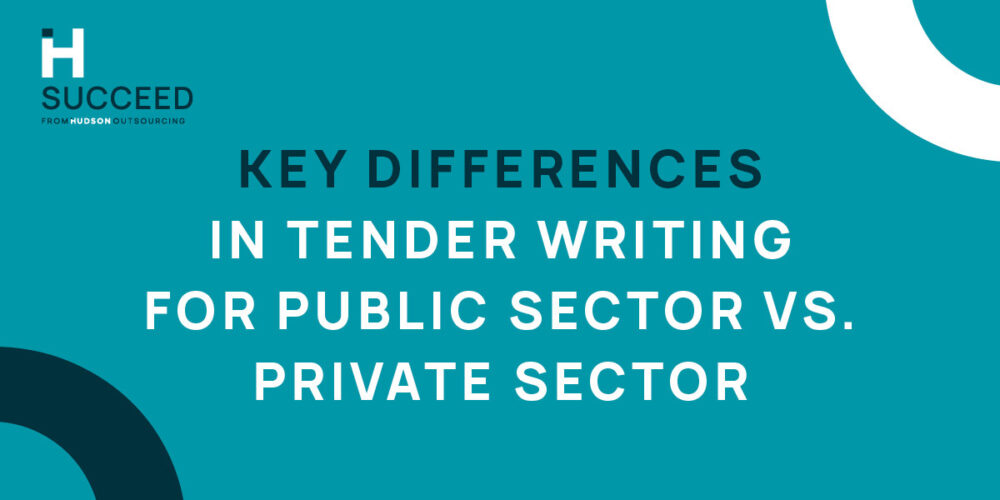UK Tenders – an introductory guide
Last updated: Dec 17, 2021 @ 12:39 pm
Nobody said UK tenders were simple. In fact, the UK is renowned for having one of the most complex, obscure and difficult to understand systems of procurement and tendering in the world. For any prospective supplier looking to tender for contracts, it is worth understanding the different types of UK tender, what they mean, why they are significant, and how to tackle them.
Helpfully, most of the different types of a UK tender can be summarised by two or three letter acronyms.
RFP:
Full name: Request for Proposal.
Typical sectors: Creative, occasionally Construction.
Info: This is typical of the creative sector and involves the creation of a free-flowing proposal. This type of tender can be designed for maximum visual appeal as well as being filled with excellent content. This type of tender will not include the restrictions you might find in an ITT. It might, however, have some word limits or formatting rules to adhere to. It is though, the type of UK tender with the greatest potential for creativity. Indeed, bidders can include graphs, charts, appendices, pictures, mood boards, organograms etc. to make their proposal as inspiring and engaging as possible. A few important points of note about RFPs:
- These are most common in the creative sector for the delivery of services such as videography, event production, website design etc.
- Prospective suppliers are often invited to put forward non-compliant bids, i.e. bids which suggest an alternative to the specification and to use their creative abilities to find even more innovative solutions to buyer requirements than those outlined in the tender documentation.
- Typically, rather than inputting data into a pre-formatted buyer document, it is up to suppliers themselves to decide how to mock up, put together and present their response and sometimes buyer don’t even outline what they expect to see.
- Presentation may also have a big influence.
If you’re needing help with writing a proposal or need a second pair of eyes, contact our Hudson Succeed team today. Members of our team have almost 20 years of experience writing proposals and would be delighted to help.
RFQ:
Full name: Request for Quotation.
Typical sectors: Construction.
Info: This procurement procedure is typically undergone by buyers who have a clear idea of the works they have put out to tender and merely want a quotation from prospective suppliers. Typically, but not always, this will involve the provision of basic supplier information along with a proposed fee for the works – simple.
- Prospective suppliers though should still be careful to read all the associated documentation that comes with an RFQ. Sometimes, buyers can ask for the fee schedule to be formatted in a certain way, or to be accompanied by a method statement, policies or other key information. If this is missing, your bid may be deemed non-compliant. Have a look at our Tender VLE video on “common mistakes made” when tendering and to avoid these.
- Typically, evaluation is done purely on the basis of cost. The lowest price wins – easy. However, this is not always true. If buyers ask for evidence of policies or quality questions, they may apportion some of the evaluation weight to this aspect too. Check out our Tender VLE video on “Sourcing the MEAT” for more information on how buyers typically evaluate tender responses.
- Suppliers should ensure their quotation (unless otherwise stated) is inclusive of expenses potentially incurred on the job and exclusive of VAT. But it is always best to check with the buyer’s instructions. As always with UK tenders, if you’re unsure, ask the buyer! Take a look at our Tender VLE video on “Clarification Questions” for more information on the importance of asking questions to the buyer prior to your bid submission.
PQQ:
Full name: Pre-Qualification questionnaire.
Typical sectors: All.
Info: This is typically the first stage buyers use to establish a shortlist of preferred suppliers, whom they then invite to tender. This will typically involve the filling in of a form which is more or less similar across all industries. The form will ask potential suppliers for details including financial information, insurances, policies and compliance with key buyer criteria. PQQs form the basis of most UK tenders and you can expect to have to fill one in at some point during your tendering endeavours. A few important things to note about PQQs:
- They are incredibly common. Hence, it is worth getting to grips with these.
- They can sometimes be published online for prospective suppliers to fill in. Hence, if the buyer documents refer to a PQQ but don’t seem to have included one in the “tender documents” file – it is worth checking online on the procurement portal.
- PQQs are usually the first stage of a procurement exercise and largely consist of pass/fail criteria. They will involve what might seem like intrusive questions about your organisation’s employees, financial history and accreditations, with yes or no answers. Make sure you tick the right box! You don’t want to exclude yourself from the procurement by accidentally clicking/ticking “yes” instead of “no” because you were in a rush!
Cast an eye over our Tender VLE video on “PQQ basics” which will help you understand more about what to expect from the first round of a typical UK tender. If you need a hand understanding the intricacies of a PQQ and how to fill in a compliant form that will meet the buyer’s expectations, contact our Hudson Succeed team who will be happy to help.
SQ:
Full name: Selection Questionnaire.
Typical sectors: All.
Info: A selection questionnaire is effectively a synonym for a PQQ. Selection Questionnaires are now becoming much more standardised across the board thanks to recent government guidance on the matter. A few things to consider are:
- SQs involve a similar level of detail to PQQs and require care and precision to complete.
- SQs are now appearing in different, standardised forms across different industries. A PAS 91 for example is a construction industry standard selection questionnaire to allow purchasing organisations to make an objective, technical assessment of potential suppliers based on data relating to their policies, accreditations, insurances and turnover. An ESPD, for example, is a European Single Procurement Document. This is a standardised, non-sector specific SQ which prospective suppliers can fill in once with the requisite information and then attach to bids that allow this. Check out our helpful Tender VLE video on ESPDs which will help explain these even further.
If you need a hand understanding SQs and how to ensure you don’t miss key information, talk to our Bid Writers today, who will be happy to talk you through the selection and tendering process.
EOI:
Full name: Expression of interest.
Typical sectors: All. Most commonly Construction.
Info: Prior to continuing with the procurement process, purchasing organisations sometimes like to gather information about interested prospective suppliers. They may publish an EOI which requires prospective suppliers to provide initial details and to register their intent to progress with the procurement. As with most UK tenders, there is no set formula for an EOI. They can be as simple as the click of a button or involve an extensive explanation of a bidder’s H&S/Equality/Contract Management policies and procedures. A few important points about EOIs are below:
- EOIs are not that common. Typically, buyers gather any “initial” information they might require, from the PQQ or SQ stage of a tender.
- If a tender starts with an EOI, progresses on to a PQQ/SQ and finishes with an ITT (which is sometimes the case) then prospective suppliers must be aware that they are in for the long haul – the procurement process is likely to take several months, or even longer. Buyers will evaluate supplier responses at each stage and (very slowly) make decisions accordingly about who to invite to the next round.
ITT:
Full name: Invitation to Tender.
Typical sectors: All.
Info: An invitation to tender is usually the most lengthy, complex and involved type of UK tender. It is typically, but not always, the second stage in a standard public-sector procurement process, after an SQ or PQQ. Often though, buyers skip the initial questionnaire stage and publish an invitation to tender for open competition straight away. An ITT will typically involve a lengthy set of requirements, background information to the buyer and the procurement, an extensive amount of forms to be completed and specific submission requirements. A few important points of note about RFPs:
- ITTs will often involve precise requirements, not always clearly laid out in a neat list (if only…). Suppliers need to check they have read the documentation thoroughly to ensure no important information has been missed that might put their submission in jeopardy.
- ITTs are normally conducted through a tendering portal. Prospective suppliers will typically have to register and become familiar with these in order to ask questions about the procurement and to bid for the work.
- Closed ITT – This is where suppliers have to be chosen/invited to bid for work. This type of tendering has been accused of being exclusivist and of intentionally putting barriers in the way of SMEs. Hence, it is becoming less common.
- Open ITT – This is where an opportunity is published for open competition and anyone can bid.
Take a look at our Tender VLE video on “ITT basics” which will help you understand more about what to expect from an Invitation to Tender.
Further Support
If you’re struggling to digest the requirements of any of the above, need a hand with the writing Government Tenders or to cast an eye over your work, contact our Tender Writing Consultants. Our team of tendering experts will be happy to guide you through the competitive tender process to help your organisation push for tendering success!
Find more helpful tips and advice in our blogs. We cover topics including:






